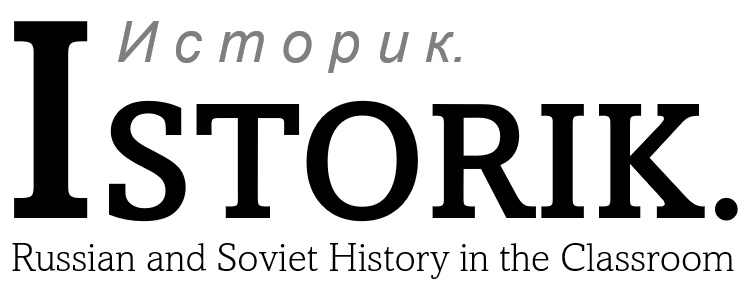In March 1917, Tsar Nicholas II’s government was replaced in
power by a coalition of liberals and moderate socialists. In October 1917, that
coalition was replaced by Lenin’s Bolsheviks.
There’s a very simple narrative that’s tempting to give to
students. 1917 was a story of Lenin’s growing power and the Bolshevisation
of revolutionary politics. Yet many historians are now less sure about this
narrative than they were before. For one, it was by no means clear in the
spring of 1917 that Lenin and the Bolsheviks could have much influence over the
revolution. For another, even as their power grew, they remained part of a
wider constellation of left-wing groups that sought to overthrow the Provisional
Government and replace it with… well, something (even if people couldn’t
really agree).
This story obviously can’t be told without Lenin and the
Bolsheviks. But it doesn’t necessarily need to be told exclusively through
them, either.
This post provides an explanation and outline of my approach to teaching the question of Russia’s changing political climate in 1917, using the story of an anarchist sailor, Anatoly Zhelezniakov.
All lesson resources can be found on the Google Drive folder
here.
In
Context
Anatoly Zhelezniakov’s story is a remarkable one. A sailor
in the Russian Baltic Fleet, he was part of the radical Kronstadt garrison
in 1917, which had a huge Bolshevik following – but also a large anarchist and SR-Maximalist
one. His actions and experiences of 1917 shine a light on key aspects of Russia’s
increasingly polarised politics (and the rise of the Bolsheviks) during this
year.
Shortly after Lenin had arrived back in April 1917 to announce his plan to replace the Provisional Government with a government of soviets, the Kronstadt Soviet of Zhelezniakov and his fellow sailors declared itself to be the sole authority in the garrison town, establishing what would become commonly known as the “Kronstadt Republic”. At protests against the Provisional Government in June and July 1917, he and other armed Kronstadt sailors paraded through the Russian capital, Petrograd.
At the Second All-Russian Congress of Soviets in October
1917, Zhelezniakov was there in the capital again, representing his fellow
sailors as Congress declared the overthrow of the Provisional Government. Finally,
in January 1918, it was left to Zhelezniakov, leading a contingent of sailors
from Kronstadt, to shut down the Constituent Assembly, effectively guaranteeing
a Bolshevik-led government.
Zhelezniakov’s story was retold by the foremost historian of Russian anarchism, Paul Avrich, in his 1988 biographical collection, Anarchist Portraits (from which the narrative of his life here is taken).
More broadly, though, his story is a striking representation of one much-overlooked aspect of politics in 1917 – the collaboration between different radical left groups to overthrow the Provisional Government. This is something historian Rex Wade calls the “left bloc” which rose to prominence during the “political polarization” of 1917. Although generally dominated by the more powerful Bolsheviks, it contained Left SRs, Menshevik-Internationalists, and anarchists – all of them seeking the overthrow of the Provisional Government.
Key Considerations for Teaching
- Lenin and the Bolsheviks’ rise to power in 1917 was not inevitable, but was part of a general “polarisation” of revolutionary politics that took place from the end of spring 1917.
- Other radical left groups participated in the movement to overthrow the Provisional Government, including anarchists, Left SRs, and Menshevik-Internationalists.
- Although the Bolsheviks were the most powerful group in the “left bloc”, they gained valuable support from their radical left-wing allies.
- At certain points, including in the July Days protests, Lenin’s leadership seemed to falter and lagged behind the actions of radicals like Zhelezniakov, who took a leading role in local actions.
Vocabulary
and Substantive Concepts
Before tackling this lesson, students should have a grasp of
the following terms and their meanings.
- Lenin/Bolsheviks
- Mensheviks
- SRs
- anarchists
- political polarization
- soviets
- Provisional Government
Lesson Outline
and Resources
- This lesson is framed as one considering how the radical left took power in late 1917. First, students are introduced to the idea of political polarization through the familiar story of Lenin’s return and April Theses
- They are then invited to consider the limitations of this through the interpretation of historian Rex Wade, in order to move them towards the actions and contributions of non-Bolsheviks in this process
- After being introduced to Anatoly Zhelezniakov, they are given his personal story in the form of a narrative of 1917
- Students are asked to read through Zhelezniakov’s story and pick out the key moments he witnessed and participated in which contributed to polarization of politics in 1917
- Students map the key events onto a timeline, which can be made into a living graph, before narrowing their list of events to those they consider most important
Further
Reading
Paul Avrich, Anarchist Portraits, Princeton
University Press (1988), 107-110
Rex Wade, The Russian Revolution 1917, Cambridge University Press (2017), esp. chapters 3 and 8






No comments:
Post a Comment